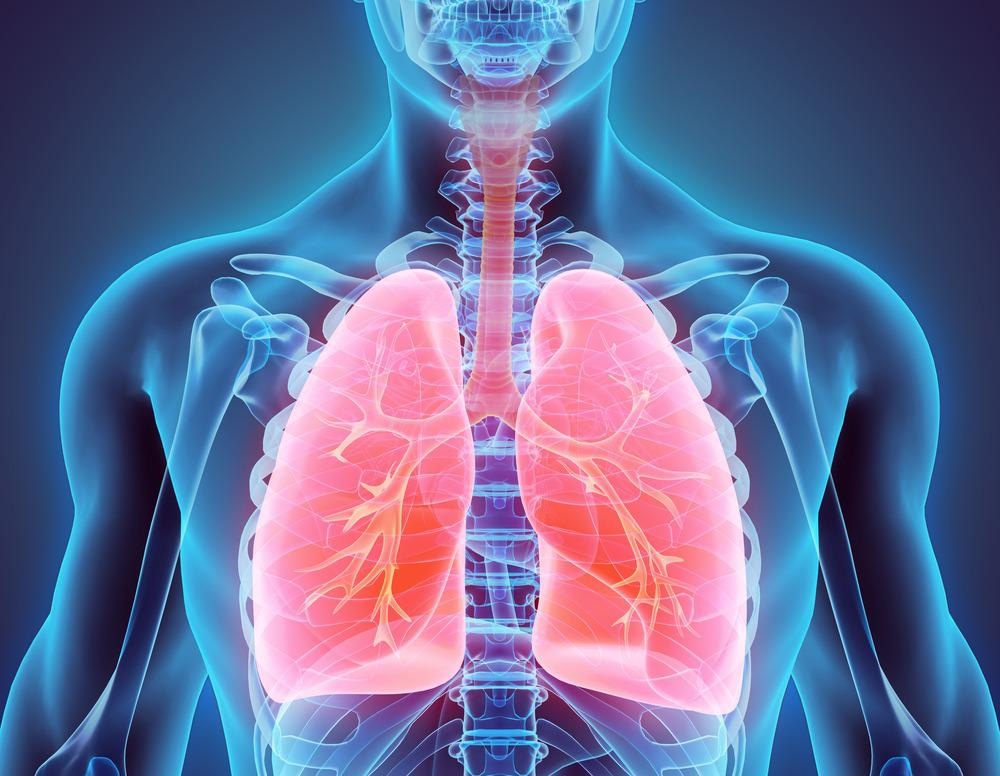Fitness tracker sensors have progressed in leaps and bounds in the last few years. Wearables for personal training now include accurate heart monitors, accelerometers, and even electrocardiogram (ECG) devices. But breath is more rarely monitored, not only in personal fitness scenarios but also in medical settings. This creates a gap in health data, one that is recently being plugged with developments in sensor technology.

Image Credit: MDGRPHCS/Shutterstock.com
Why Monitor Breath?
Breath is an important monitor of animal health, providing useful diagnostic data for lung and heart functions. It is also an important factor in athletic performance and can be trained to maximize an individual's performance.
Wearable monitoring devices for people's breath that contain particle sensors that analyze the breath's composition are used by elite sports coaches and some health professionals. Devices like the K5 from Italian diagnostic medical supply COSMED measure how much oxygen the subject consumes, their heart rate, and the energy they are expending – all by analyzing their breath.
But devices like the K5 are bulky and only really appropriate for laboratory-like testing conditions. Just a few years ago, in 2019, wearable breath sensors had still not entered the mass market.
This was despite the obvious growth of the wearable fitness tracker sector with rising sales for FitBit watches and Apple, Samsung, and other mobile technology original equipment manufacturers (OEMs) firmly establishing themselves in the market.
Continuous respiration monitoring was typically only carried out in limited clinical and research settings and was reportedly rarely measured during field walking tests for patients with pulmonary conditions.
Recent Advances in Breath Sensing
But health and fitness tracking is becoming increasingly popular, not only for dedicated athletes and elite professionals but also for regular people trying to stay healthy or monitor chronic illnesses.
For many industry forecasters, wearable health and fitness tracking will continue to get more sophisticated, measuring more important biosensors and – it is hoped – more value to users.
A recent paper by researchers at Shenzhen University and Northwest University, both in China, introduced a new grating to improve breath sensing abilities.
The flexible humidity sensor was entirely fiber-optic in its components and inscribed with what researchers referred to as an eccentric fiber Bragg grating (EFBG) in a single-mode fiber.
Fiber Bragg gratings (FBGs) are optical filters that let some wavelengths through while reflecting others. The grating introduces variation in the refractive index of the fiber's core at set intervals along the length of the fiber.
The EFBG could directly detect humidity fluctuations during breath in under 92 ms, recognize different breathing patterns, and extract breathing frequency. It demonstrated good reproducibility, flexibility, robustness, and self-compensation qualities – making it a good candidate for future wearable breath sensing devices.
Another development in breath sensing introduced a wearable sensor that can measure respiration rate and volume simultaneously. The disposable breath sensor, developed by an interdisciplinary team from the University of California, USA, has a form factor similar to a band-aid. It sticks onto a section of the ribcage and abdomen and measures breathing.
The devices used little power and detected breath using piezo-electric sensors, which monitored the movement of the ribcage and abdomen. Researchers claimed they were compatible with wireless technology and could be used to monitor patients at home as well as to provide athletic performance feedback.
In tests published in an article in npj Digital Medicine, the sensor performed comparably to a medical grade continuous spirometer on resting participants (no comparison could be made with participants who were exercising as the medical machines limit movement).
Scientists at Kobe University, Japan, developed a stretchable strain sensor system with an algorithm that could give real-time breath measurements during exercise. This system used a similar method for recording breath, placed on the abdomen and rib cage.
The Future of Breath Sensing
Perhaps the most significant element of the Kobe University development was the researchers' focus on the new algorithm developed alongside their device. In fact, some experts now say that the barrier to widespread adoption of wearable fitness and health trackers is the unanswered question: what to do with all the data?
Improving the ways that our health and fitness data is interpreted and shared with professionals will make wearable devices more valuable, and increase adoption beyond the relatively small (but high-spending) demographics of technology and fitness enthusiasts.
An Arlington, Virginia-based health technology developed, Zansors, is taking a data-first approach to personal health and fitness tracking. With the RESPA breath sensor, Zansors have entered the consumer market with a device that tracks breath during exercise and clips on to clothing. It is lightweight and about the size of a large coin.
Zansors's cofounder, Abhijit Dasgupta, is a data scientist who works as an adjunct professor in Georgetown University's data science faculty, teaching data visualization and big data. Dasgupta also supports data science for AstraZeneca's oncology division.
Breath sensing – and the world of wearable sensing technology – will rely on people like Dasgupta to make data valuable enough for everyday users to bring about the kind of widespread adoption that smartphones have achieved.
Continue reading: Wearable Technology in the Sports Industry.
References and Further Reading
Bao, W., et al. (2021). Wearable breath monitoring based on a flexible fiber-optic humidity sensor. Sensors and Actuators B: Chemical. Available at: https://doi.org/10.1016/j.snb.2021.130794.
Caddy, B. (2019). Are fitness trackers the future of healthcare? Techradar. Available at: https://www.techradar.com/news/are-fitness-trackers-the-future-of-healthcare.
Chu, M. et al. (2019). Respiration rate and volume measurements using wearable strain sensors. npj Digital Medicine. Available at: https://doi.org/10.1038/s41746-019-0083-3.
Yamamoto, A., et al. (2019). Monitoring respiratory rates with a wearable system using a stretchable strain sensor during moderate exercise. Medical & Biological Engineering & Computing. Available at: https://doi.org/10.1007/s11517-019-02062-2
Disclaimer: The views expressed here are those of the author expressed in their private capacity and do not necessarily represent the views of AZoM.com Limited T/A AZoNetwork the owner and operator of this website. This disclaimer forms part of the Terms and conditions of use of this website.